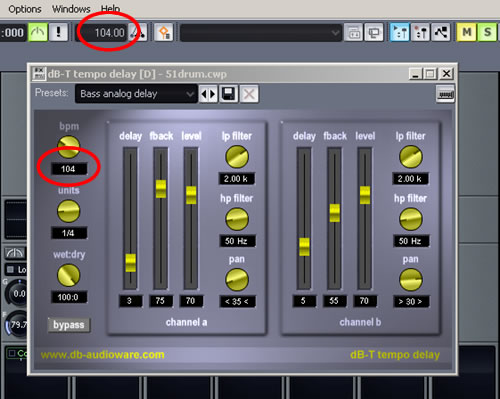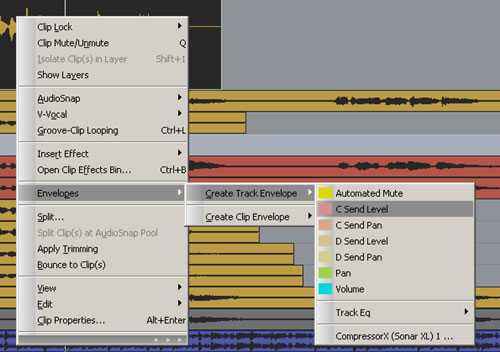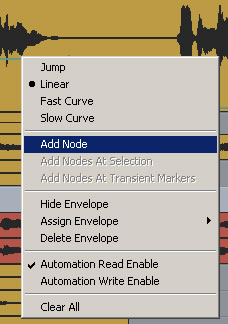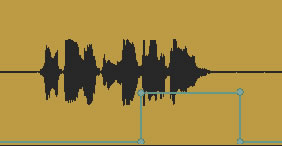Cakewalk Sonar is the DAW software used bt Apell. Techniques used creating Apell tracks in Cakewalk Sonar are covered including the use of delay envelopes, drum editing and virtual DXi and VST synths.
Using Envelopes to Automate Mixing
Cakewalk Sonar has come a long way from the basic audio / midi software package that I began to use back in 1999. Today it offers a whole range of features including intuitive audio editing, DXi / VST effects and virtual synths and automation for mixing.
Being a big fan of using delay on everything from drums to vocals I’d thought I’d show a technique I use when mixing with delay in Cakewalk Sonar. Sonar has an automation tool called Envelopes which can be used to do everything from controlling volume fades, pans, effect sends and even parameters within many of the plug-in effects. I use these envelopes to control the amount of an effect send to an auxiliary delay at certain points in a track. I do this to prevent the delay return swamping the track in a wall of background mush. It is best to only send the signal to the delay when needed such as at the end of a vocal / melody line or in a break in the music.
I usually use the dB-T Tempo Delay which allows me to set the delay to match the BPM of the track making it repeat in time to the music. In the screen shot of track So You Know, you can see that the BPM of the delay is the same as the BPM of the track. You can then play with the amount of feedback and type of delay that works the best.

The next step is to then add an envelope to the track by right clicking on track and selecting Envelopes-Create Track Envelope-Send Level. The envelope is now assigned to the effect send that sends an auxiliary signal to the delay.

The envelope will need to have Node points added to it to draw the contour which will control how much signal is sent to the delay at a particular time in the track. This is done by right-clicking on the envelope and selecting Add Node.

It is best to create 4 Node points which than can be dragged around the sound. Sonar allows you to set it up easily over a note, beat or phrase by drawing your envelope shape over the appropriate point in the waveform.

If you listen to the vocals in So You Know you can hear how the delay is turned on them in the last vocal notes in the phrases used in the chorus.
|